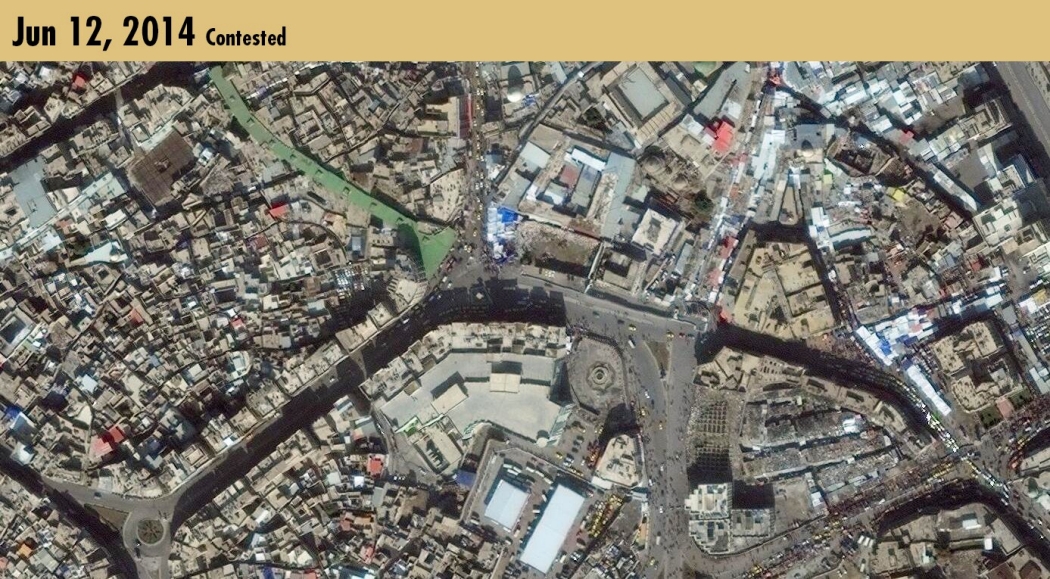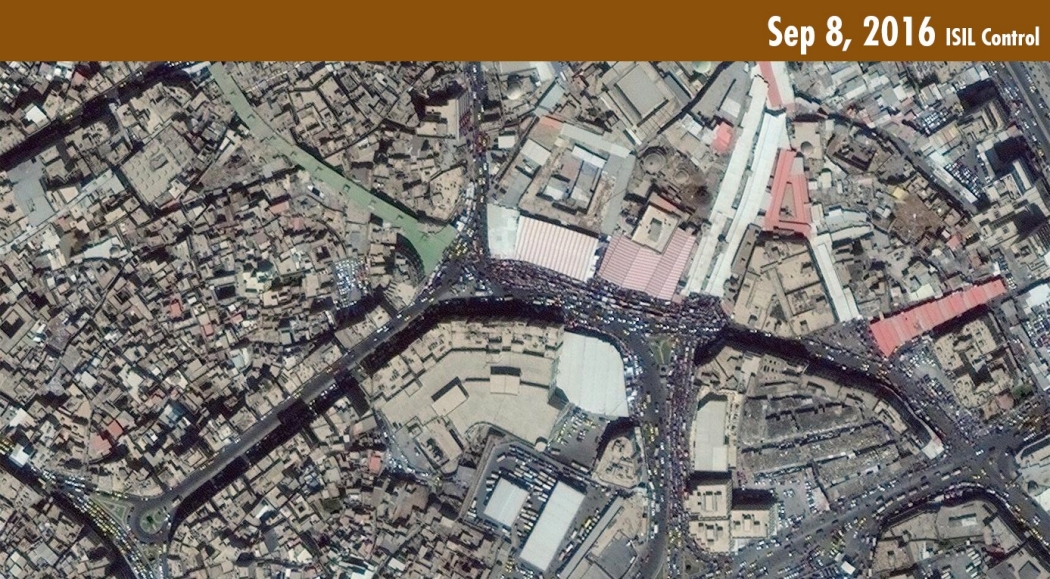 At its peak, the Islamic State of Iraq and the Levant (ISIL) controlled vast portions of territory in Iraq and Syria with several million inhabitants. Unique amongst similar jihadist groups, the Islamic State's territorial ambition and desire to conduct state-like governance over this territory is integral to its global ideological appeal.
At its peak, the Islamic State of Iraq and the Levant (ISIL) controlled vast portions of territory in Iraq and Syria with several million inhabitants. Unique amongst similar jihadist groups, the Islamic State's territorial ambition and desire to conduct state-like governance over this territory is integral to its global ideological appeal.
A RAND project – not funded by an external sponsor, but pursued for the public interest – examined ISIL's governance over its self-styled caliphate, by examining the group's impact on local economic activity in Iraq and Syria.
Using satellite imagery and a novel analytic approach, a team of RAND researchers developed a fine-grained, data-driven assessment of economic life inside ISIL's caliphate.
This site tells the story.
ISIL Occupation Status
Although significant attention has been devoted to the humanitarian impact of ISIL's brutal rule, this project focuses on the economic impact of the group's efforts to govern the territory and population under its control.
The Islamic State has proven a resilient insurgent force capable of controlling territory and administering local governance. At its peak, the Islamic State, also known as the Islamic State of Iraq and the Levant, or by the acronyms ISIL or ISIS, controlled vast portions of territory in Iraq and Syria. At times, ISIL was able to build a dense governing apparatus that helped maintain stable local commercial activity, particularly within its strategic capitals in Raqqah and Mosul. At other times, the group inadvertently mismanaged key resources or sought to punish its citizenry rather than govern it. The global appeal of its self-styled 'caliphate' has been integral to the group's efforts to recruit foreign fighters and inspire attacks globally. Given the importance of its state-like governance, this study offers a comprehensive and wide-ranging look into life within the Islamic State at the peak of its territorial control in Iraq and Syria from January 2013 through May 2016. Although significant attention has been devoted to the humanitarian impact of ISIL's brutal rule, this report focuses on the economic impact of the group's efforts to govern the territory and population under its control. Local economic activity is a useful proxy for the effectiveness of ISIL governance, particularly because the group is reliant upon local taxation for a significant portion of its revenue, and has publicly linked the appeal of its caliphate to perceptions of its prosperity.
This project offers a unique, data-driven, methodological approach to solve the problem of measuring economic activity inside areas controlled by the Islamic State. Where traditional data are unavailable to diagnose conditions on the ground from within ISIL-held cities, we instead look down upon these cities from space.
 Mosul's Bab al-Toob market shows comparable levels of activity before and after ISIL takeover, and highlights where ISIL has built new structures in the market.
Mosul's Bab al-Toob market shows comparable levels of activity before and after ISIL takeover, and highlights where ISIL has built new structures in the market.
This analysis paints a bleak picture of economic life under the Islamic State. Over the course of its peak territorial control and decline through mid-2016, the economy of the Islamic State writ large was clearly in decay.
Across all of Iraq and Syria, ISIL takeover did little to help local economies, driving the following effects:
An 80-percent reduction in urban electricity consumption in Iraq and 61-percent reduction in Syria, which equates to a 23-percent reduction in the GDP of the caliphate.
A 36-percent reduction in the population of cities under its control
A 20-percent reduction in agricultural output
Steady upticks in violence
Detailed case studies of Mosul, Raqqah, Ramadi, Deir ez-Zor, and Tikrit offer evidence that ISIL governance shoulders at least some blame for these poor economic conditions. At times, ISIL inadvertently mismanaged key natural resources or local businesses, sought to punish its citizenry rather than govern it (in cities like Tikrit), or showed sheer indifference to the status of local economic activity.
However, researchers suggest that it is too simplistic to blame stagnant local economic conditions entirely on the quality of ISIL's governance. Across the caliphate, our satellite-based indicators of economic activity offer contrasting evidence that ISIL effectively managed portions of local economies:
Successfully provided public services within its territory
Prioritized electricity to hospitals
Successfully repaired damaged power grids, and
Invested in local infrastructure.
In its strategic capitals — Mosul and Raqqah — dense ISIL regulatory regimes and more stable security situations coincided with evidence of active markets, robust commercial vehicle traffic and persistent agricultural production following the time after ISIL takeover. The service-sector and industrial components of these economies were particularly resilient, even where ISIL control was associated with larger negative impacts on electricity consumption and population outflows.
Given its relative success in Mosul and Raqqah, but difficulties supporting economic activity on the periphery of its territory, this analysis concludes that military opposition to the group was the main driving factor behind ISIL's bleak economic outlook. ISIL proved unable or unwilling to govern parts of its caliphate in the face of effective military opposition
For a closer look at the realities of life in a city under ISIL control, explore one of this research project's case study cities. 

 Mosul's Bab al-Toob market shows comparable levels of activity before and after ISIL takeover, and highlights where ISIL has built new structures in the market.
Mosul's Bab al-Toob market shows comparable levels of activity before and after ISIL takeover, and highlights where ISIL has built new structures in the market.
0 Response to "Indian Strategic Studies: When the Islamic State Comes to Town"
Posting Komentar